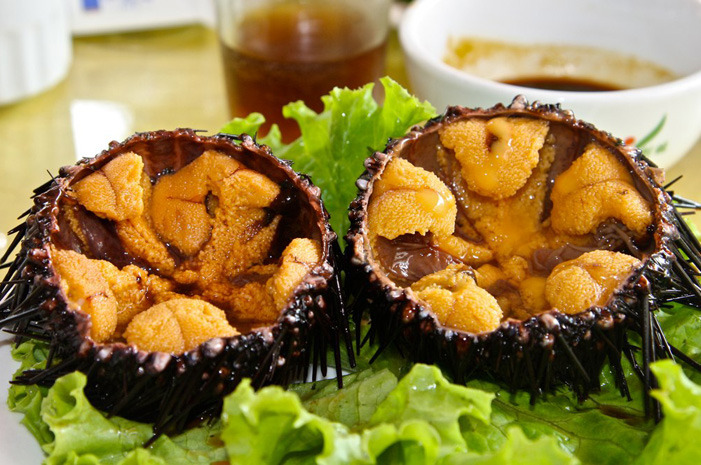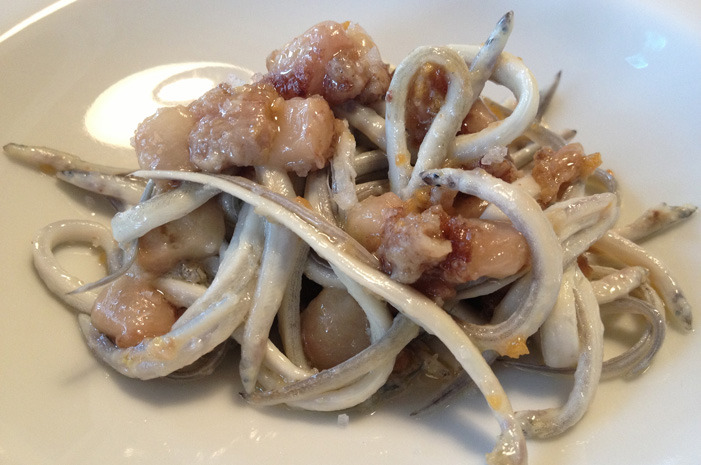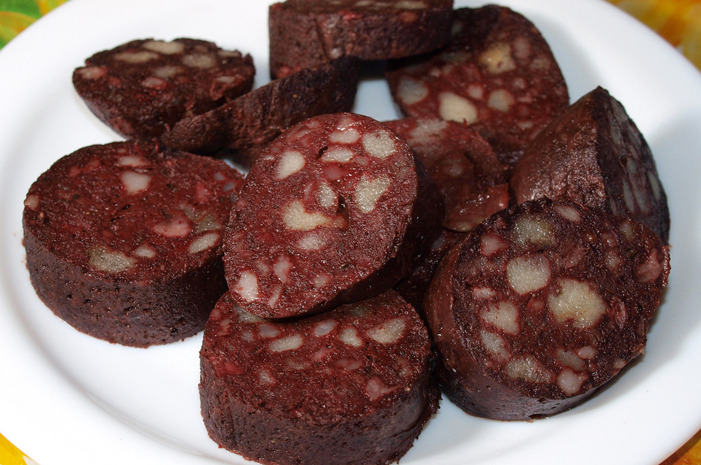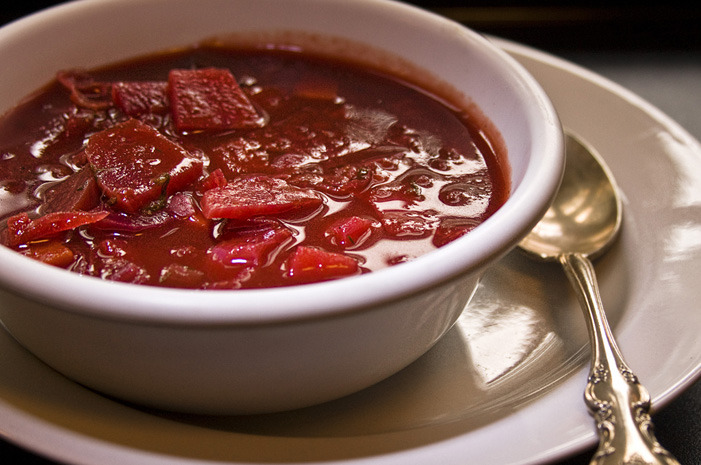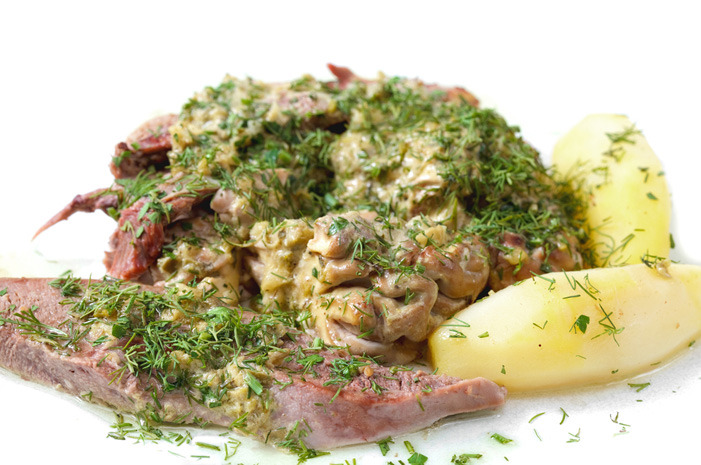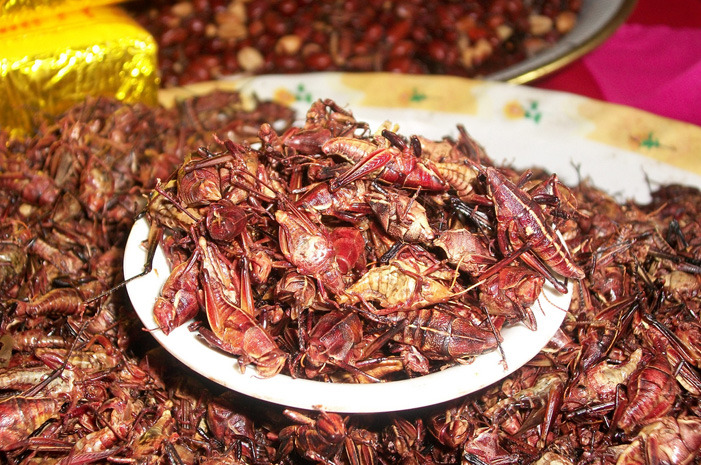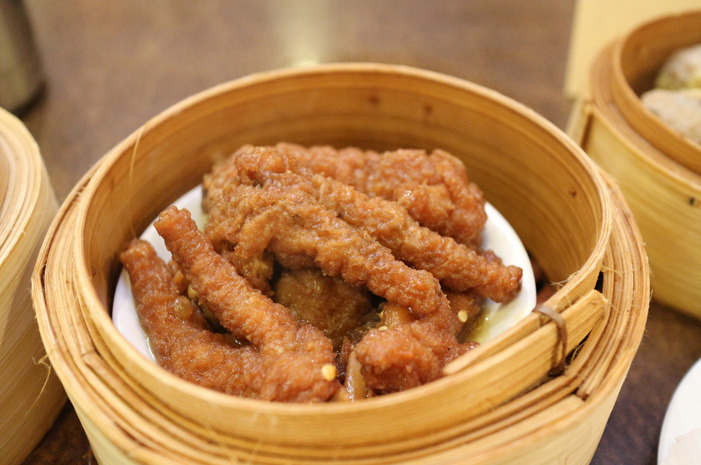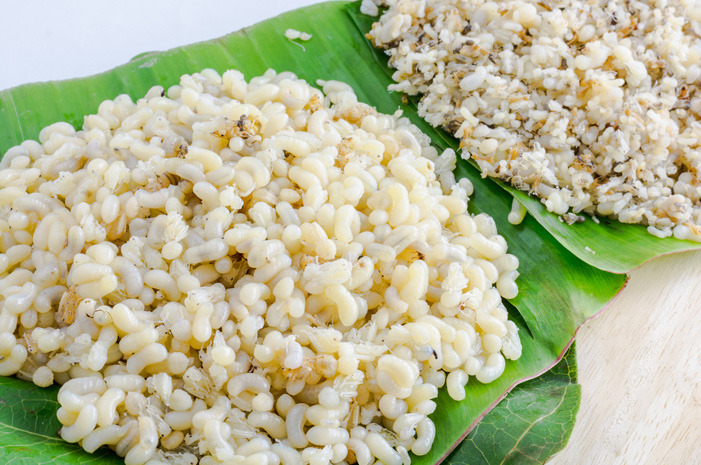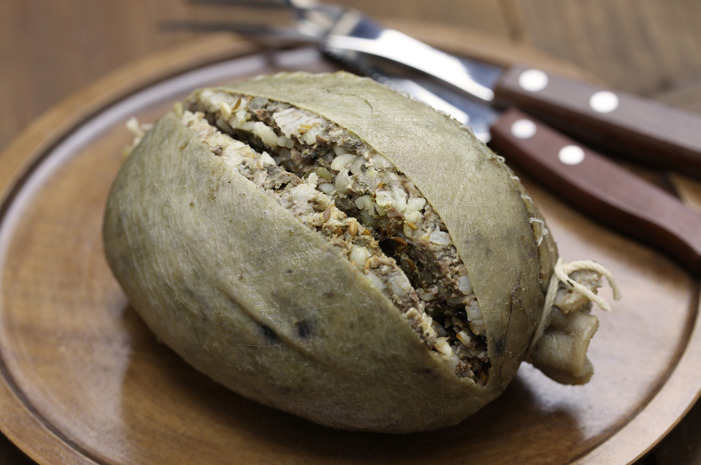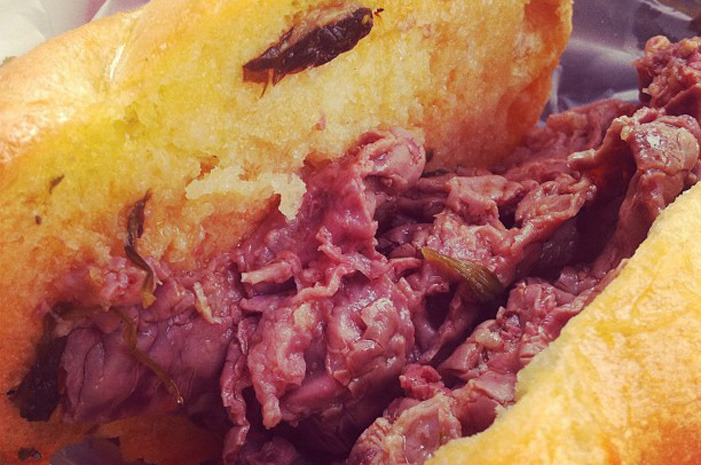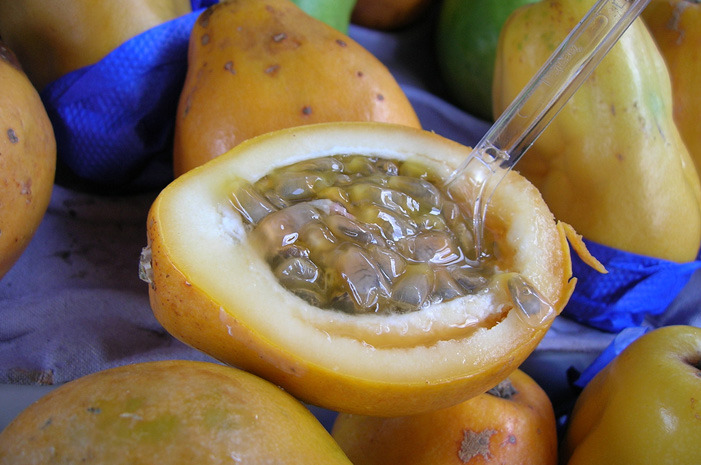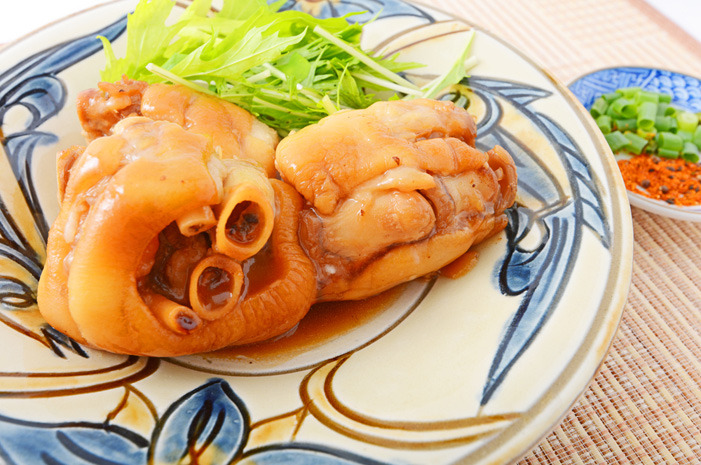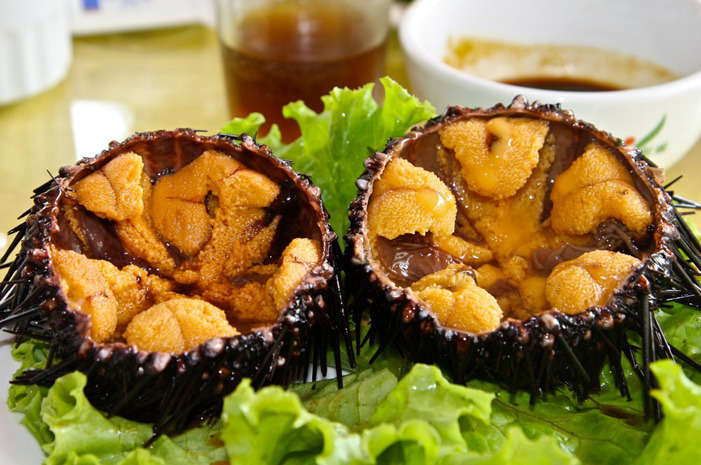12 Deceptively Delicious Dishes From Around The World
It's all relative when it comes to what people find delicious and what's considered disgusting. It depends on society, country, culture, and some innate tendencies, and it's the difference between thinking a fried spider sounds like a nightmare or something perfectly normal (they're often eaten in Cambodia). Here, we've compiled 12 dishes from around the world that might look unappetizing or worse at first, but keep an open mind because tasting each might reveal a whole new world of flavor to you.
Angulas (Miniature Eels)
Known in English as elvers, these baby eels — two to three inches long and about as thick as a piece of twine, with two pinpoint black eyes showing — are a popular dish in Spain's Basque provinces. They must be cooked — usually with olive oil, garlic, and chiles — alive or right after they're killed (traditionally by drowning in tobacco water) to maintain the right texture.
Black Pudding (Blood Sausage)
Traditionally eaten in England, Scotland, Ireland, France, and many other countries, black pudding is basically congealed pig's or cow's blood, usually mixed with a binder such as oatmeal or rice, flavored with onions and spices, and stuffed into a casing. It is eaten either whole like a sausage, in thick slices, or crumbled.
Borscht
The problem with this soup, a Ukrainian staple also enjoyed in Russia and around Eastern and Central Europe, is its bright electric pink color — more like Pepto-Bismol than like something you'd want to eat. The color comes from beets, the main ingredient, so you know the soup is healthy, even when it's garnished with sour cream.
Calf’s Brains
Calf's brains are a staple of French cuisine and widely eaten elsewhere in Europe and the Middle East, among other places. They are often deep-fried or cloaked in beurre noire ("black butter," cooked over low heat until its milk solids turn very dark), or, in Cuba, flavored with lime and cumin. However they're cooked, they still often look like, well, brains — full of deep folds.
Chapulines
These are fried grasshoppers, particularly popular in Oaxaca, where they are eaten as a snack or cloaked in chile sauce and folded into corn tortillas. They look like exactly what they are' but they're rich in protein, low in fat, and very crunchy.
Chicken Feet
Enjoyed in China and other Asian countries (look for them at dim sum restaurants), chicken feet can be served as a snack or in a stew. They're usually deep-fried, steamed, or braised, and often marinated in soy sauce, and there's no mistaking that they're chicken feet.
Escamoles
Haggis
Virtually the national dish of Scotland — the great Scots poet Robert Burns even wrote an ode to it — though also eaten in northern England, haggis is a sort of coarse pâté or sausage made from sheep organs (including heart, lungs, and liver) mixed with suet, oatmeal, and seasonings and traditionally boiled inside a sheep's stomach (though today it is often packed in plastic). The result is a rich dish with a savory, almost nutty flavor. To outsiders who ask how they can eat sheep offal packed into a stomach, the Scots sometimes point out that the sausage eaten by much of the rest of the world is basically pig offal packed into an intestine.
Lampredotto
Passion Fruit
Passion fruit (known as lilikoi in Hawaii), which comes from Brazil and some of its surrounding countries, looks nice enough when you first see it, sort of like a dark red plum. Cut one open, though, and it looks slimy and garishly yellow, with a texture that suggests that a cat has been sick in the neighborhood. Taste it anyway. It has a sweet and tart flavor, similar to that of the guava, and can be used in margaritas, mousse, and a variety of other recipes.
Pig's Feet
Used in dishes around the world, pig's feet, or trotters, look like truncated hands, with two immense, stubby fingers — something out of a horror movie. High in fat and protein, though, they're full of sweet, tasty meat. Some recipes call for them to be boned out, stuffed with mushrooms, and wrapped in caul fat; others stew them or boil them with celery, onions and garlic. In the South, they might be served alongside greens and mashed potatoes.
Uni (Sea Urchin)
Uni, yellow or orange in color, looks slightly furry when it's whole. Knowing that it's not the roe of the sea urchin, as it is sometimes described, but the creature's gonads doesn't exactly add to its appeal. A popular ingredient in sushi and used increasingly by Western chefs in various ways around the world, however, it has a sweet and briny taste that can be quite addictive, especially if you don't mind its iodine-y pungency.
